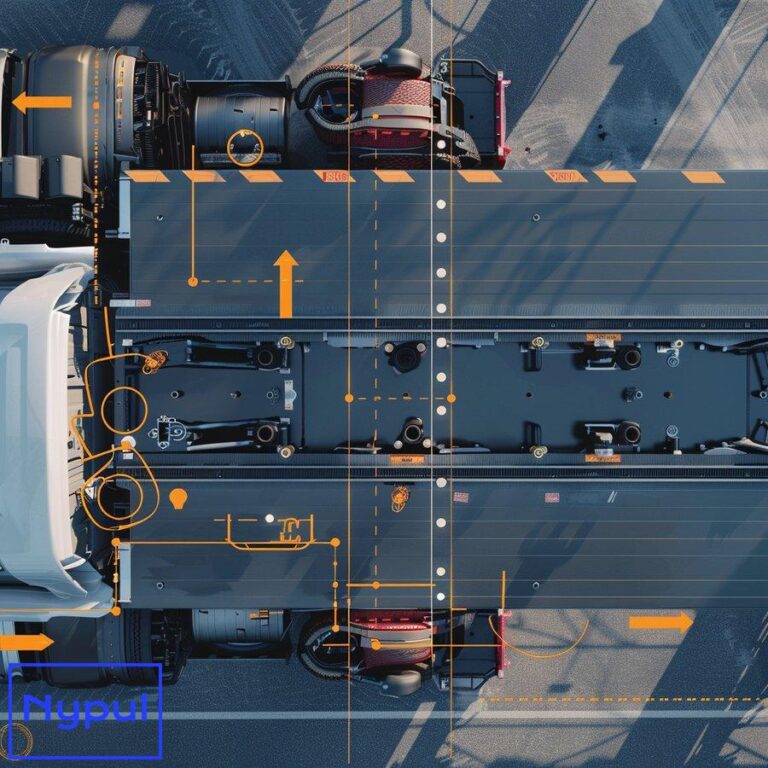Are Electronic Logbooks Mandatory
What is the ELD Mandate?
The Electronic Logging Device (ELD) Mandate is a federal regulation implemented by the Federal Motor Carrier Safety Administration (FMCSA) that requires certain commercial motor vehicle drivers to use electronic logging devices to record their hours of service (HOS). This mandate aims to create a safer work environment for drivers and make it easier and faster to accurately track, manage, and share records of duty status (RODS) data.
The ELD Mandate was first published in the Federal Register on December 16, 2015, and became effective on February 16, 2016. The mandate established a two-phase implementation timeline:

Phase 1: Awareness and Transition Phase
This phase began on February 16, 2016, and lasted until December 18, 2017. During this period, carriers and drivers subject to the rule could voluntarily use ELDs or continue using paper logs or logging software.
Phase 2: Phased-In Compliance Phase
This phase started on December 18, 2017, and required carriers and drivers subject to the rule to use either ELDs or Automatic On-Board Recording Devices (AOBRDs) that were installed before December 18, 2017.
Full Compliance Phase
Beginning December 16, 2019, all carriers and drivers subject to the rule were required to use ELDs.
The ELD Mandate applies to most motor carriers and drivers who are currently required to maintain records of duty status (RODS) per Part 395, 49 CFR 395.8(a). The rule specifies that an ELD must:
- Connect to the vehicle’s engine to record if the vehicle is in motion
- Allow the driver to log in and select On-duty, Off-duty, or On-Duty Not Driving status
- Display a record of duty status so a driver can quickly see hours driven
- Provide data in a standardized format that can be transmitted to law enforcement in several prescribed ways, such as wireless web services, USB, or Bluetooth
The primary goals of the ELD Mandate are to:
Improve road safety
By ensuring drivers adhere to hours-of-service regulations, the mandate aims to reduce driver fatigue and related accidents.
Increase compliance
Electronic logs are harder to falsify than paper logs, promoting better compliance with HOS rules.
Enhance efficiency
ELDs streamline the logging process, reducing paperwork and administrative burdens for both drivers and carriers.
Facilitate data sharing
The standardized format of ELD data makes it easier for carriers, drivers, and law enforcement to access and review HOS information.
Understanding the ELD Mandate is crucial for carriers and drivers to ensure compliance and avoid penalties. The following sections will delve deeper into who is required to use electronic logbooks, the benefits of ELDs, and how to implement them effectively.
Who is required to use electronic logbooks?
The ELD Mandate applies to a wide range of commercial motor vehicle (CMV) drivers and motor carriers. However, there are specific criteria that determine whether a driver or carrier must comply with the mandate. Understanding these requirements is crucial for ensuring compliance and avoiding potential penalties.
Drivers and Carriers Subject to the ELD Mandate
The ELD rule generally applies to motor carriers and drivers who are currently required to keep records of duty status (RODS) under the hours-of-service (HOS) regulations. This includes:
- Interstate commercial motor vehicle drivers
- Drivers who operate vehicles that:
- Weigh 10,001 pounds or more
- Have a gross vehicle weight rating or gross combination weight rating of 10,001 pounds or more
- Are designed or used to transport 16 or more passengers (including the driver) not for compensation
- Are designed or used to transport 9 or more passengers (including the driver) for compensation
- Transport hazardous materials in quantities requiring placards
Exceptions to the ELD Mandate
While the mandate covers a broad range of drivers and carriers, there are several exceptions:
-
Short-haul drivers: Drivers who use the 100 air-mile radius exception or the 150 air-mile radius exception are not required to use ELDs, provided they return to their work reporting location within 12 or 14 hours, respectively.
-
Drive-away-tow-away operations: Drivers who transport vehicles as commodities by driving them are exempt from the ELD requirement.
-
Pre-2000 model year vehicles: Drivers of vehicles with engines manufactured before 2000 are not required to use ELDs due to compatibility issues with older vehicle systems.
-
Drivers who maintain RODS for 8 days or less: During any 30-day period, drivers who use paper RODS for not more than 8 days are exempt from the ELD requirement.
Canada- and Mexico-domiciled drivers
Drivers from Canada and Mexico who operate in the United States must comply with the ELD mandate when driving within U.S. borders. However, they may use ELDs that are compliant with their home country’s regulations, provided these devices meet the minimum requirements set by the FMCSA.
Agricultural operations
The ELD mandate provides some flexibility for agricultural operations:
-
Drivers transporting agricultural commodities within a 150 air-mile radius of the source of the commodities are exempt from the HOS rules, including the use of ELDs, during planting and harvesting periods as determined by the state.
-
Drivers transporting livestock within a 150 air-mile radius of the source are exempt from the HOS rules, including the use of ELDs.
Rental trucks
For rental trucks, the responsibility for ELD compliance depends on the duration of the rental:
- For rentals of 8 days or less, the driver is not required to use an ELD and may use paper logs.
- For rentals exceeding 8 days, the driver must use an ELD.
Table: Summary of ELD Requirements by Driver/Vehicle Type
| Driver/Vehicle Type | ELD Required? | Notes |
|---|---|---|
| Interstate CMV drivers | Yes | Unless exempt |
| Vehicles ≥ 10,001 lbs | Yes | |
| Vehicles transporting 16+ passengers (not for compensation) | Yes | |
| Vehicles transporting 9+ passengers (for compensation) | Yes | |
| Hazmat vehicles requiring placards | Yes | |
| Short-haul drivers | No | If using 100 or 150 air-mile radius exception |
| Drive-away-tow-away operations | No | |
| Pre-2000 model year vehicles | No | Based on engine model year |
| Drivers using RODS ≤ 8 days in 30 days | No | |
| Canada/Mexico-domiciled drivers in US | Yes | May use home country compliant ELDs |
| Agricultural operations within 150 air-miles | No | During state-defined planting/harvesting periods |
| Rental trucks ≤ 8 days | No | |
| Rental trucks > 8 days | Yes |
Understanding who is required to use electronic logbooks is essential for compliance with the ELD Mandate. Carriers and drivers should carefully evaluate their operations to determine if they fall under the mandate’s requirements or qualify for any exemptions. When in doubt, it’s advisable to consult with the FMCSA or a legal expert specializing in transportation regulations to ensure full compliance.
How do electronic logbooks improve safety and compliance?
Electronic logbooks, or Electronic Logging Devices (ELDs), have revolutionized the way commercial motor vehicle (CMV) drivers and carriers manage hours of service (HOS) and comply with federal regulations. These devices offer numerous benefits that significantly enhance safety on the roads and improve overall compliance with transportation laws.
Accurate HOS Tracking
ELDs automatically record a driver’s driving time and duty status, eliminating the potential for human error associated with paper logs. This accuracy ensures that drivers adhere to the legal limits on driving hours, reducing the risk of fatigue-related accidents.
Real-time HOS Monitoring
Carriers can monitor their drivers’ HOS in real-time, allowing for better fleet management and ensuring drivers don’t exceed their allowed driving time. This immediate visibility helps prevent HOS violations before they occur.
Reduced Driver Fatigue
By enforcing HOS regulations more effectively, ELDs help combat driver fatigue. Fatigued driving is a significant safety concern in the trucking industry, and ELDs play a crucial role in ensuring drivers get the required rest periods.
Improved Data Integrity
ELDs make it much more difficult to falsify logs compared to paper records. This increased data integrity helps create a level playing field in the industry and ensures that all carriers are operating under the same rules.
Streamlined Inspections
During roadside inspections, law enforcement officers can quickly review a driver’s HOS data on the ELD. This streamlined process reduces inspection times and gets drivers back on the road faster.
Enhanced Compliance Management
ELDs provide carriers with comprehensive data on their drivers’ compliance status. This information allows for proactive management of potential violations and helps identify areas where additional training may be needed.
Reduced Paperwork
By automating the logging process, ELDs significantly reduce the amount of paperwork drivers and carriers need to manage. This reduction in administrative burden allows more time to focus on safe driving and efficient operations.
Improved CSA Scores
Compliance, Safety, Accountability (CSA) scores are crucial for carriers. ELDs help improve these scores by reducing HOS violations and providing accurate data for audits.
Better Trip Planning
With real-time HOS data, dispatchers can make more informed decisions about trip assignments and routing, ensuring drivers have sufficient available hours to complete their trips safely and legally.
Faster Audits
In the event of a DOT audit, ELD data can be easily retrieved and reviewed. This efficiency can significantly reduce the time and resources required for audit compliance.
Enhanced Vehicle Diagnostics
Many ELDs integrate with vehicle diagnostic systems, providing valuable data on vehicle performance and potential maintenance issues. This integration can help prevent breakdowns and improve overall fleet safety.
Improved Communication
ELDs often include messaging features that facilitate better communication between drivers and dispatchers. This improved communication can help address safety concerns more quickly and efficiently.
Table: Safety and Compliance Improvements with ELDs
| Improvement Area | Without ELDs | With ELDs |
|---|---|---|
| HOS Tracking Accuracy | Prone to human error | Automated and highly accurate |
| Real-time Monitoring | Limited or delayed | Instant visibility |
| Data Integrity | Easier to falsify | Difficult to manipulate |
| Inspection Process | Time-consuming | Streamlined and efficient |
| Paperwork | Extensive | Significantly reduced |
| Compliance Management | Reactive | Proactive |
| Trip Planning | Based on estimates | Data-driven and precise |
| Audit Preparation | Time-intensive | Quick and efficient |
| Vehicle Diagnostics | Limited integration | Often included with ELDs |
| Driver-Dispatcher Communication | Often fragmented | Integrated and efficient |
The implementation of electronic logbooks has brought about a significant improvement in safety and compliance within the trucking industry. By providing accurate, real-time data and automating many aspects of HOS management, ELDs have become an invaluable tool for drivers, carriers, and regulators alike. As the industry continues to embrace this technology, we can expect to see further enhancements in road safety and regulatory compliance.
What are the key features of FMCSA-approved ELDs?
The Federal Motor Carrier Safety Administration (FMCSA) has established specific technical specifications that Electronic Logging Devices (ELDs) must meet to be compliant with the ELD mandate. These features ensure that the devices accurately record Hours of Service (HOS) data and provide the necessary functionality for drivers, carriers, and law enforcement. Understanding these key features is crucial for selecting an appropriate ELD solution and ensuring compliance with federal regulations.
Engine Synchronization
FMCSA-approved ELDs must connect directly to the vehicle’s engine control module (ECM) to automatically record engine power status, vehicle motion status, miles driven, and engine hours.
Automatic Driving Status Recording
The ELD must automatically switch to driving status once the vehicle reaches a speed threshold of 5 mph and revert to on-duty not driving when the vehicle has been stationary for 3 consecutive minutes.
Location Tracking
ELDs must record the vehicle’s location at least once every hour while the vehicle is in motion, at each change of duty status, and at engine-on and engine-off events.
Graph Grid Display
The device must be capable of displaying a graph grid of a driver’s daily duty status changes either on the ELD or on a printout.
Data Transfer Capabilities
ELDs must support one of two options for electronically transferring data to authorized safety officials:
1. Telematics: Wireless Web Services and Email
2. Local: USB 2.0 and Bluetooth
Tamper Resistance
The ELD must not permit alteration or erasure of the original information collected concerning the driver’s Hours of Service, or alteration of the source data streams used to provide that information.
Certification
Manufacturers must certify that their ELDs meet the required technical specifications and register them with FMCSA.
Driver Identification
The ELD must require each driver to log in with a unique username and password before recording any driving time to that driver’s record.
Duty Status Options
ELDs must allow drivers to select from the following duty statuses:
– Off Duty
– Sleeper Berth
– Driving
– On-Duty Not Driving
Annotations and Edits
The device must allow for annotations to explain any edited driving time and provide the ability to edit incorrect driving assignments.
Data Retention
ELDs must retain data for the current 24-hour period and the previous 7 consecutive days.
Unassigned Driving Time
The ELD must be capable of recording and managing unassigned driving time.
Malfunction and Data Diagnostic Events
ELDs must be able to detect malfunctions and data inconsistencies and record these occurrences.
Personal Use and Yard Moves
The device must allow drivers to indicate personal use of the vehicle or yard moves, which are recorded as on-duty not driving time.
Team Driver Support
For team driving operations, ELDs must be able to maintain separate accounts for each driver and allow for easy switching between drivers.
Table: Key Features of FMCSA-Approved ELDs
| Feature | Description | Importance |
|---|---|---|
| Engine Synchronization | Connects to ECM for automatic data recording | Critical for accurate HOS tracking |
| Automatic Status Recording | Changes driving status based on vehicle movement | Ensures precise duty status changes |
| Location Tracking | Records location at specified intervals | Essential for verifying HOS compliance |
| Graph Grid Display | Visually represents daily duty status changes | Facilitates quick review of HOS data |
| Data Transfer Capabilities | Supports electronic data transfer to officials | Crucial for roadside inspections |
| Tamper Resistance | Prevents unauthorized alterations to HOS data | Maintains data integrity |
| Driver Identification | Requires unique login for each driver | Ensures accurate assignment of driving time |
| Duty Status Options | Allows selection of various duty statuses | Necessary for complete HOS recording |
| Annotations and Edits | Permits explanations for edited driving time | Provides context for HOS changes |
| Data Retention | Stores data for current day and previous 7 days | Meets FMCSA retention requirements |
| Unassigned Driving Time | Records and manages unassigned driving | Accounts for all vehicle operation |
| Malfunction Detection | Identifies and logs device malfunctions | Alerts drivers to potential compliance issues |
| Personal Use/Yard Moves | Allows indication of specific vehicle uses | Differentiates between types of on-duty time |
| Team Driver Support | Manages separate accounts for team drivers | Accommodates various operational scenarios |
These key features of FMCSA-approved ELDs work together to create a comprehensive system for accurately recording and managing Hours of Service data. By ensuring that ELDs meet these specifications, the FMCSA aims to improve road safety, enhance compliance with HOS regulations, and create a standardized system for electronic logging across the trucking industry.
When selecting an ELD solution, carriers and drivers should carefully review the features offered by different devices to ensure they meet both the FMCSA requirements and their specific operational needs. It’s also important to verify that the chosen ELD is listed on the FMCSA’s registry of certified devices to guarantee compliance with the mandate.
How can fleets implement electronic logbooks effectively?

Implementing electronic logbooks, or Electronic Logging Devices (ELDs), can be a significant change for fleets accustomed to paper logs or older electronic systems. However, with proper planning and execution, the transition can be smooth and beneficial. Here’s a comprehensive guide on how fleets can effectively implement electronic logbooks:
Develop an Implementation PlanDevelop an Implementation Plan
Creating a detailed implementation plan is crucial for a successful transition to electronic logbooks. This plan should include:
-
Timeline: Establish a clear timeline for the rollout of ELDs, including key milestones such as training sessions, installation, and go-live dates.
-
Budget: Determine the budget for purchasing ELDs, installation costs, and any additional software or hardware needed to support the devices.
-
Stakeholder Engagement: Involve key stakeholders, including drivers, fleet managers, and IT personnel, in the planning process to ensure their needs and concerns are addressed.
-
Compliance Review: Conduct a thorough review of current compliance practices to identify areas that may need adjustment to align with ELD requirements.
Select the Right ELD Provider
Choosing the right ELD provider is critical for effective implementation. Consider the following factors when evaluating potential providers:
-
FMCSA Certification: Ensure that the ELD is FMCSA-approved and listed on the FMCSA’s registry of certified devices.
-
User-Friendly Interface: Look for devices with intuitive interfaces that minimize the learning curve for drivers and fleet managers.
-
Integration Capabilities: Check if the ELD can integrate with existing fleet management systems to streamline operations and data management.
-
Customer Support: Evaluate the level of customer support offered by the provider, including training resources and technical assistance.
Training Drivers and Staff
Effective training is essential for ensuring that drivers and staff can use ELDs correctly. Consider implementing the following training strategies:
-
Hands-On Training: Provide hands-on training sessions where drivers can practice using the ELDs in a controlled environment before going live.
-
Online Resources: Offer online tutorials, videos, and user manuals that drivers can access at their convenience.
-
Ongoing Support: Establish a system for ongoing support and troubleshooting, allowing drivers to seek help as they adjust to the new technology.
Monitor Compliance and Performance
Once ELDs are implemented, it’s important to monitor compliance and performance continuously. This can be achieved through:
-
Regular Audits: Conduct regular audits of HOS data to ensure compliance with federal regulations and identify any discrepancies or issues.
-
Performance Metrics: Track key performance metrics such as HOS violations, driver fatigue incidents, and overall fleet efficiency to assess the impact of ELD implementation.
-
Feedback Mechanism: Create a feedback mechanism for drivers to report any challenges or suggestions regarding the use of ELDs. This feedback can help improve processes and address concerns promptly.
Utilize Data Analytics
Leveraging data analytics from ELDs can provide valuable insights into fleet operations. Consider using data analytics to:
-
Identify Trends: Analyze HOS data to identify trends in driver behavior, such as frequent violations or patterns of fatigue-related incidents.
-
Optimize Routes: Use real-time data to optimize routes based on driver availability and compliance with HOS regulations.
-
Enhance Training Programs: Use insights from data analytics to enhance training programs by addressing specific areas where drivers may need additional support or education.
By following these steps, fleets can effectively implement electronic logbooks while maximizing safety, compliance, and operational efficiency. The transition may require effort and investment upfront but will ultimately lead to long-term benefits in managing hours of service and improving overall fleet performance.
What are the penalties for non-compliance with the ELD mandate?
Non-compliance with the Electronic Logging Device (ELD) mandate can result in significant penalties for both drivers and carriers. Understanding these penalties is crucial for ensuring adherence to regulations and avoiding costly fines. The FMCSA has established various enforcement measures aimed at promoting compliance with HOS regulations through ELD usage.

Types of Penalties
- Fines for Drivers
- Drivers found operating without an ELD when required may face fines ranging from $1,000 to $10,000 per violation.
-
Additional fines may apply if drivers fail to maintain accurate records or exceed HOS limits due to improper logging practices.
-
Fines for Carriers
- Carriers can also incur fines for non-compliance with ELD regulations. Fines may range from $10,000 to $25,000 depending on the severity of the violation.
-
Carriers may be held liable if their drivers do not comply with HOS regulations due to inadequate training or failure to provide necessary tools (like ELDs).
-
Out-of-Service Orders
- Drivers found in violation of HOS regulations due to improper logging may be placed out of service until they can demonstrate compliance.
-
Carriers may face out-of-service orders if they are found repeatedly violating HOS rules or failing to ensure their drivers use compliant devices.
-
Increased CSA Scores
- Non-compliance can lead to increased scores under the Compliance, Safety, Accountability (CSA) program. Higher CSA scores can affect a carrier’s ability to secure contracts and insurance coverage.
-
A poor CSA score may also lead to increased scrutiny during inspections or audits by regulatory agencies.
-
Legal Consequences
- In severe cases of non-compliance or repeated violations, carriers may face legal action from regulatory agencies or lawsuits stemming from accidents caused by fatigued driving.
- Legal penalties could include hefty fines or even criminal charges in extreme cases where negligence leads to serious accidents or fatalities.
Table: Summary of Penalties for Non-Compliance with ELD Mandate
| Violation Type | Potential Penalty | Notes |
|---|---|---|
| Driver operating without an ELD | $1,000 – $10,000 | Per violation |
| Carrier fines for non-compliance | $10,000 – $25,000 | Based on severity |
| Out-of-service orders | Immediate suspension | Until compliance is demonstrated |
| Increased CSA scores | Negative impact on reputation | Affects contracts and insurance |
| Legal consequences | Varies widely | Possible lawsuits or criminal charges |
Understanding these penalties emphasizes the importance of compliance with the ELD mandate. Carriers should prioritize proper training for their drivers on using electronic logbooks effectively while ensuring that all vehicles meet FMCSA requirements. By doing so, they can mitigate risks associated with non-compliance while enhancing overall safety within their operations.
How do electronic logbooks integrate with existing fleet management systems?
Integrating electronic logbooks (ELDs) with existing fleet management systems is essential for maximizing operational efficiency and ensuring compliance with Hours of Service (HOS) regulations. A well-integrated system allows fleets to streamline processes while providing comprehensive insights into vehicle performance and driver behavior. Here’s how this integration works effectively:
Seamless Data Flow
One of the primary benefits of integrating ELDs with fleet management systems is seamless data flow between devices. Key aspects include:
-
Real-Time Data Sharing: Integration allows real-time sharing of HOS data between ELDs and fleet management software. This capability enables dispatchers and managers to monitor driver availability instantly without manual input.
-
Centralized Data Management: All relevant data—such as driver logs, vehicle diagnostics, maintenance schedules—can be stored in one centralized system. This centralization simplifies access for audits or inspections while reducing administrative burdens on staff.
Enhanced Reporting Capabilities
Integrating electronic logbooks enhances reporting capabilities within fleet management systems:
-
Comprehensive Reports: Fleet managers can generate comprehensive reports that combine HOS data with other operational metrics like fuel consumption and route efficiency.
-
Customizable Dashboards: Many integrated systems offer customizable dashboards that allow managers to visualize key performance indicators (KPIs) related to driver behavior and vehicle performance easily.
Improved Compliance Management
Integration plays a crucial role in maintaining compliance with federal regulations:
-
Automated Alerts: Fleet management systems can send automated alerts when a driver approaches HOS limits or violates safety regulations. This proactive approach helps prevent potential violations before they occur.
-
Audit Preparedness: With integrated systems storing all relevant data in one place, preparing for audits becomes significantly easier as all necessary documentation is readily available at a moment’s notice.
Streamlined Maintenance Scheduling
Integrating electronic logbooks also aids in streamlining maintenance scheduling:
-
Diagnostic Data Integration: Many modern ELDs provide diagnostic information about vehicle health alongside HOS data. This integration enables fleet managers to schedule maintenance based on actual vehicle performance rather than estimates.
-
Preventative Maintenance Alerts: By analyzing both driving patterns from ELDs and diagnostic data from vehicles, fleets can implement preventative maintenance schedules that reduce downtime and enhance safety.
Enhanced Driver Communication
Effective integration improves communication between drivers and dispatchers:
-
Instant Messaging Features: Many integrated platforms offer messaging features that allow drivers to communicate directly with dispatchers regarding route changes or issues encountered on the road.
-
Access To Information On-the-Go: Drivers can access important information such as load assignments or route updates directly through their mobile devices linked with integrated systems.
Table: Benefits of Integrating Electronic Logbooks with Fleet Management Systems
| Benefit Area | Description |
|---|---|
| Seamless Data Flow | Real-time sharing of HOS data; centralized management |
| Enhanced Reporting | Comprehensive reports; customizable dashboards |
| Improved Compliance | Automated alerts; easier audit preparedness |
| Streamlined Maintenance | Diagnostic data integration; preventative maintenance alerts |
| Enhanced Driver Communication | Instant messaging features; access information on-the-go |
Integrating electronic logbooks into existing fleet management systems not only streamlines operations but also enhances overall safety and compliance within commercial fleets. By leveraging technology effectively, carriers can optimize their operations while ensuring adherence to federal regulations governing hours of service logging requirements.
What challenges do drivers face when transitioning to electronic logbooks?

Transitioning from paper logs or older logging methods to electronic logbooks (ELDs) presents several challenges for drivers. Understanding these challenges is essential for fleets looking to implement effective training programs and support systems during this transition period. Here are some common challenges faced by drivers:
Learning Curve
Many drivers may experience a steep learning curve when adapting to new technology:
-
Technical Proficiency Variability: Drivers come from diverse backgrounds regarding technological proficiency; some may struggle more than others in understanding how an ELD functions.
-
Device Complexity: The complexity of certain devices might overwhelm some users initially; therefore adequate training becomes critical in addressing this issue effectively.
To mitigate these challenges:
- Provide hands-on training sessions focusing on device functionality.
- Offer ongoing support through accessible resources like user manuals or online tutorials tailored specifically towards different skill levels among users.
Resistance To Change
Change often brings resistance among employees accustomed to established practices:
-
Comfort With Paper Logs: Drivers who have been using paper logs for years might feel comfortable sticking with traditional methods despite knowing they must switch eventually.
-
Concerns About Surveillance & Privacy Issues: Some drivers may perceive electronic logging as intrusive monitoring rather than an aid in compliance efforts leading them hesitant towards embracing it fully.
To address resistance:
- Communicate openly about why this change is necessary—highlighting benefits such as improved safety measures alongside enhanced operational efficiencies resulting from accurate tracking capabilities offered by modern technologies like ELDS.
- Encourage driver feedback throughout implementation phases so they feel involved rather than forced into adopting new processes without input being considered valuable by management teams overseeing transitions themselves!
Table: Common Challenges Drivers Face When Transitioning To Electronic Logbooks
| Challenge Area | Description |
|---|---|
| Learning Curve | Variability in technical proficiency; device complexity overwhelming some users initially |
| Resistance To Change | Comfort with paper logs; concerns about surveillance & privacy issues |
By recognizing these challenges early on during implementation phases within fleets transitioning towards adopting ELDS technology solutions—management teams can proactively address them through targeted training programs aimed at facilitating smoother transitions overall!
In conclusion, understanding both benefits associated alongside potential hurdles encountered while implementing electronic logbook solutions will ultimately empower fleets seeking greater efficiencies whilst ensuring regulatory compliance remains top priority moving forward!






